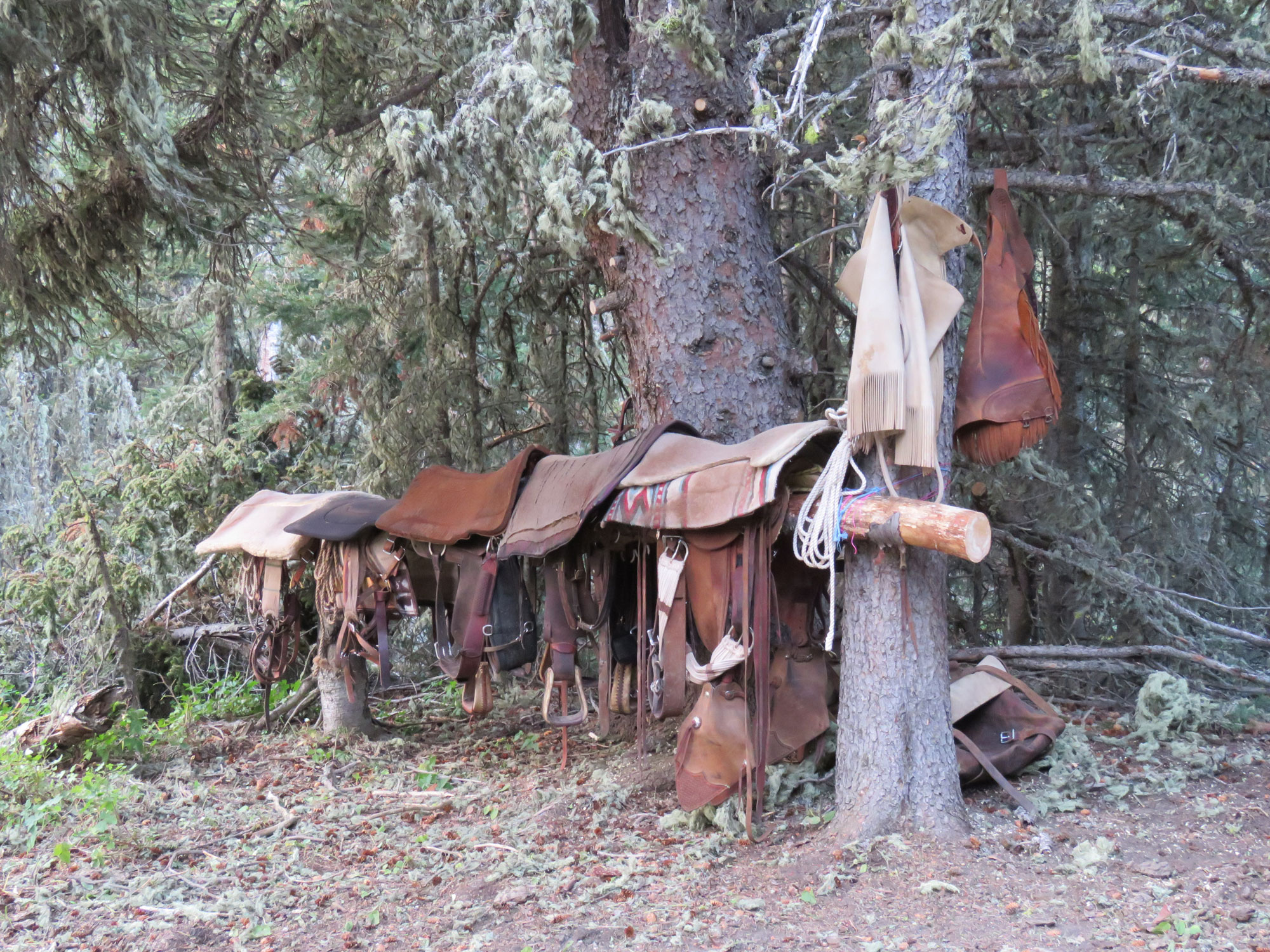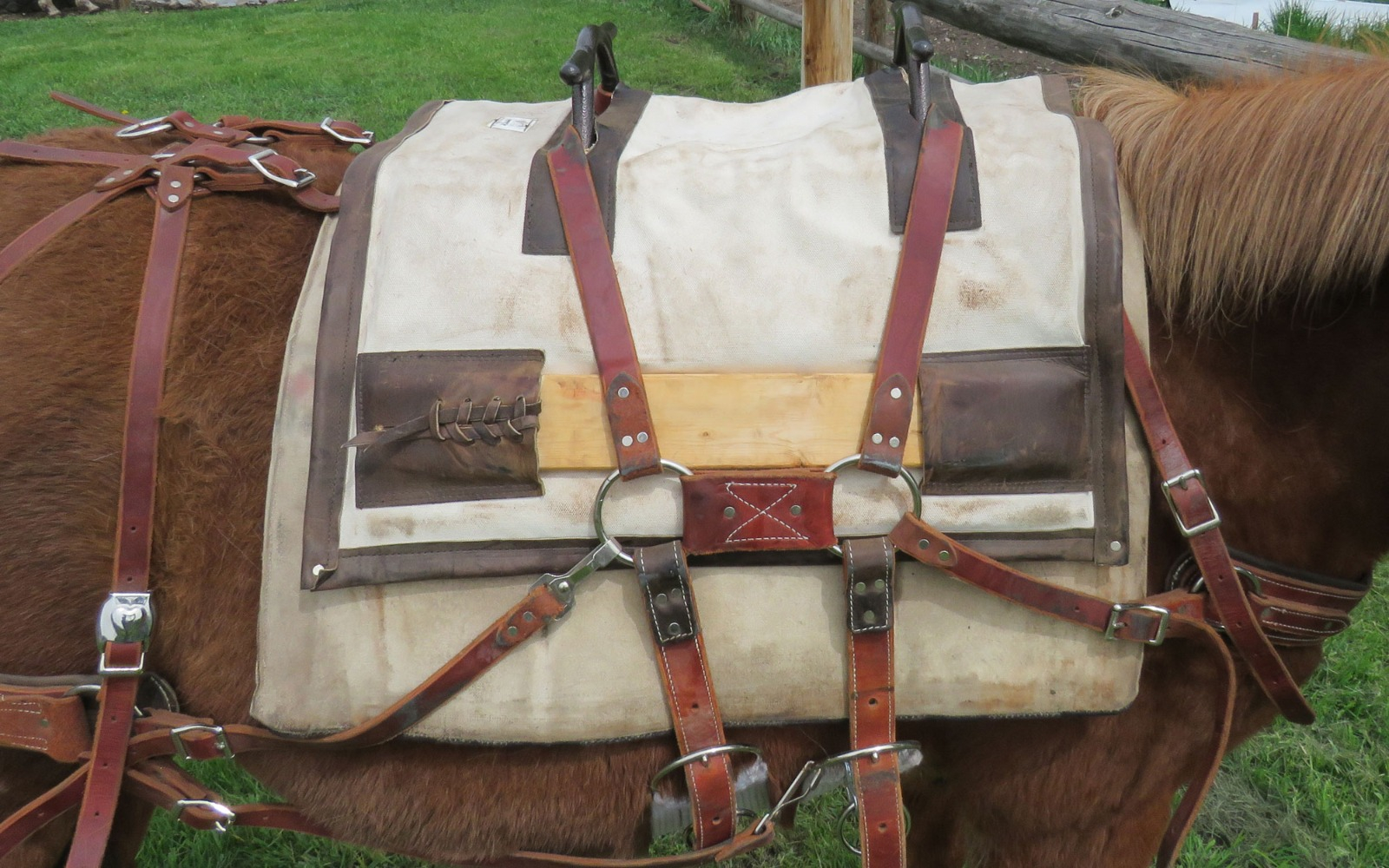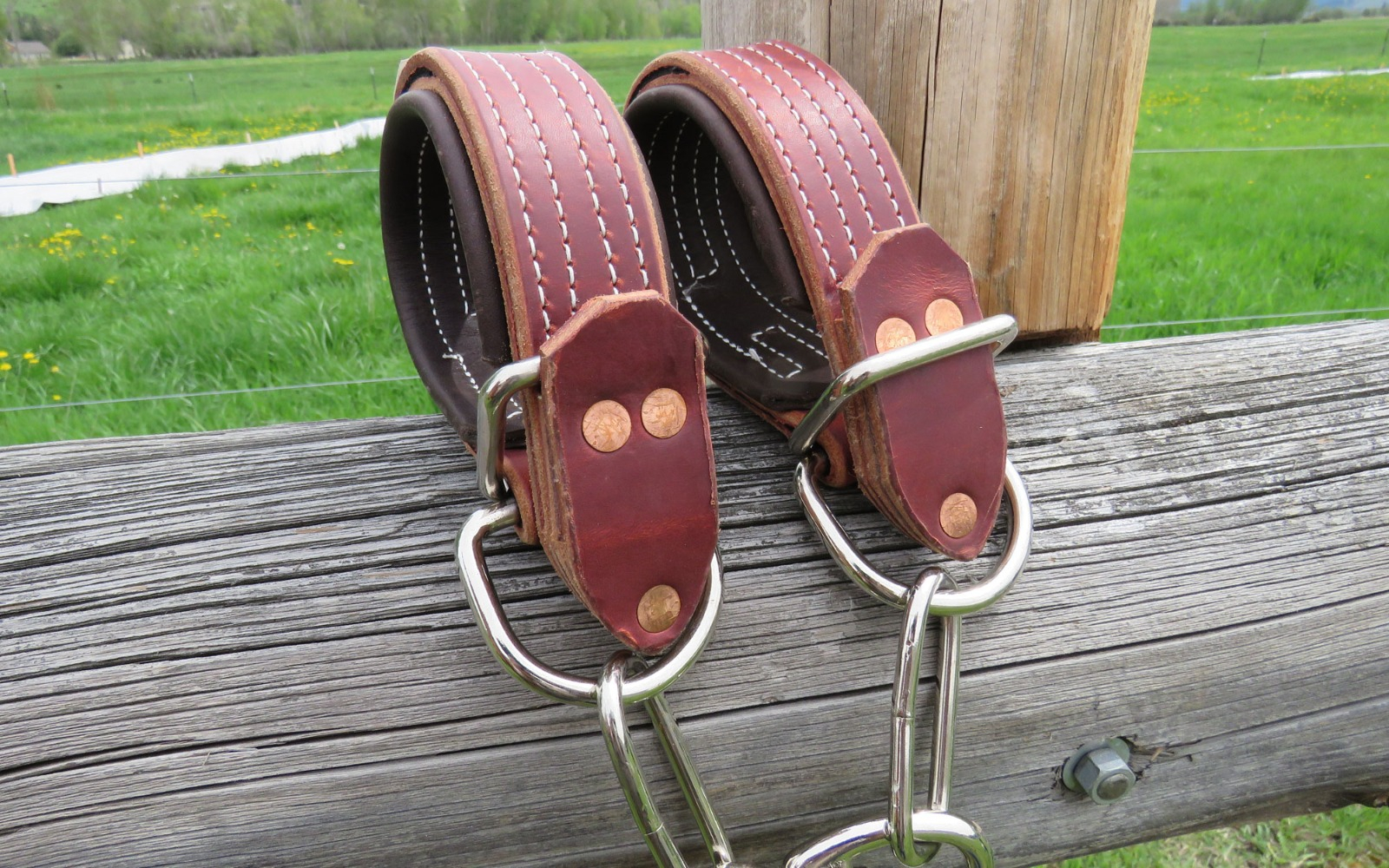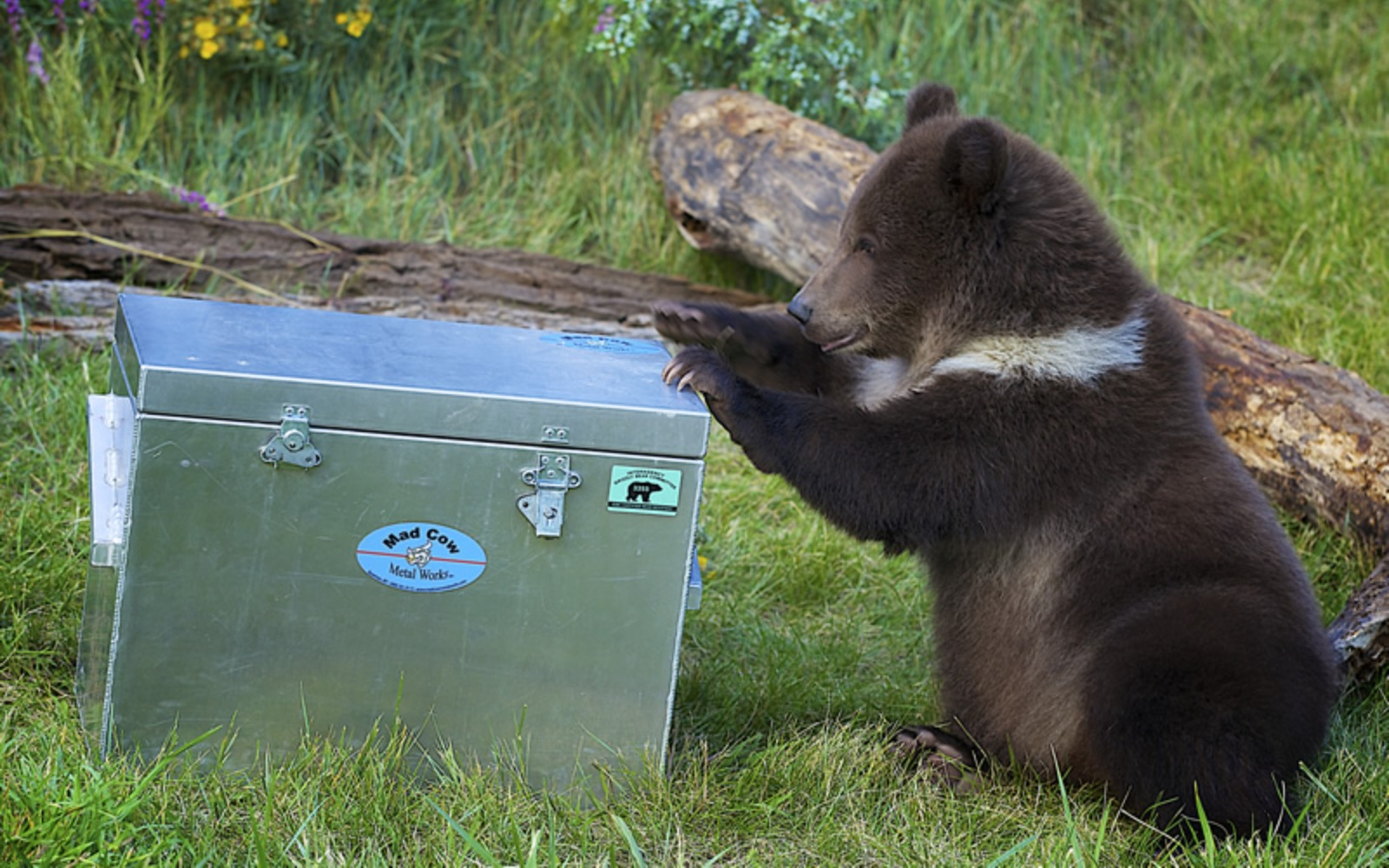
NOTICE: Certain links on this post may earn a commission for Western Hunter Magazine from Amazon or our other affiliate partners when you make a purchase. Thank you for your support.
Horse Packing Equipment - the New and the Old
horse packing equipment has changed very slowly over time. In fact, the sawbuck pack saddle dates back to the time of Genghis Khan. This saddle design was used by the American Indians and was the foundation of the pack gear used by the fur trappers and prospectors playing a significant role in opening the American West. These saddles have packed just about anything a horse or mule could carry.
The first Decker pack saddle tree, with its wooden bars and steel bows, appeared in central Idaho and was first used by an Arapaho packer by the name of S.C. MacDaniels during the mining boom of 1898-1900. Oliver P. Robinette of Kooskia, Idaho improved upon MacDaniels’ design and the “O.P.R.” design became the standard pack saddle was used by the Forest Service extensively throughout Idaho and Montana. Eventually, through its use out of the Forest Service “Remount Depot” in the 1930s, it became the pack saddle of choice for the Forest Service and continues with that status throughout the West today.
The horse packing equipment used today is essentially unchanged from what it was when I began packing into the Idaho backcountry in 1976.
Over the last century, little has changed when it comes to the pack saddle, which is the basic foundation for horse packing equipment. This dynamic is essentially the same when it comes to accompanying pack gear such as panniers, ropes, manties, various kinds of slings, and pack boxes.
On the contrary, when one thinks of the clothing, footwear, vehicles, rifles, scope sights, archery equipment, and all the other gear we hunters use today, horse packing equipment pales when compared to all other advances in the hunting industry.
As I reflected upon this situation and searched for new and improved versions of horse packing equipment, I was reminded of the packing clinic Smoke Elser did a month ago for some of our area youths. Smoke puts on packing clinics all over the country for groups ranging from the U.S. Army Infantry to backcountry horsemen groups. The gear he uses is nothing more than the tried-and-true OPR Decker, manties, sling ropes, mantie ropes, lead ropes, rope headstalls, and recycled U.S. Army aluminum medic boxes, recycled as bear-resistant panniers. If it works, why change it? If it isn’t broken, why fix it? These principles have been the guidelines of the horse packing equipment industry for decades.
With that in mind, I was still able to find some good new additions to consider. Here are some top choices.

Phillips Formfitter Pack Saddle
Although I became aware of the Phillips Formfitter saddle some time ago, as pack gear goes, it’s a relative newcomer to the field. My hunting partner and I have used this saddle and can certainly vouch for its quality and the way it fits a pack animal. The Phillips Formfitter is unquestionably an excellent new design for a pack saddle.
Wade Maul, who manufactures the Phillips Formfitter, describes the saddle in the following manner. “It doesn’t have a rigid tree. Instead, the left and right side of the pack saddle move independently with the movement of the animal at all times. That allows the tree to fit just about any animal.”
The Formfitter tree allows the left and right sides of the tree to move independently, allowing the tree to fit just about any pack animal.
The tree bases are 23 inches long and made out of a unique polyurethane blend. It makes them durable with some flexibility, even in cold weather conditions. The tree bases have full leather sheath and fleece on the bottom. The tree bars are made out of a 60/61 aluminum and are powder coated. The saddle comes complete with the half breed and a cinch.
You can order the Formfitter with a single or double rigging. The breeching spider utilizes four straps instead of two. The straps coming off the breeching have buckle covers, so the tail hair won’t catch in the buckles. The saddle can be rigged with a single or double cinch. The breeching and breast collar are 2.5 inches wide and fully lined with soft chap leather. All straps are made out of high quality 12-14 oz. oiled harness leather. The pack saddle also comes standard with nickel-plated hardware.
For more info, visit www.outfitterspackstation.com.
Phillips Formfitter pack saddle makes easy work of packing an elk.

Heavy Duty Lined Buckle-less Hobbles
I use hobbles a lot in the backcountry to keep my animals from pawing or simply to quiet them down on a highline so they don’t disturb the soil under the highline. My Ray Holes grazing hobbles have been my standby for decades. They are made of strong harness leather and the buckles are heavy duty.
However, when I discovered the buckle-less hobbles made by Wade Maul at Outfitters Pack Station, I liked how easy they are to “buckle” and “unbuckle” with the leather tab that simply slides through a square ring and “hooks” to secure the hobbles. These hobbles are made of strong russet harness leather and are lined with soft leather to ensure comfort for the horse. Hobbles come with a nickel-plated chain. The chain has a swivel to avoid tangles.
The hobble on the left has the leather tab “hooked” on the square ring while the hobble on the right illustrates how the leather tab slides under the square ring and hooks to secure the hobble.
Buckle-less hobbles secured with the leather tabs locked behind the square rings.

Mad Cow Custom Aluminum Panniers
This spring I was a part of a group of Mule Deer Foundation volunteers who helped facilitate a packing clinic taught by Smoke Elser for a group of area youths. Smoke was his usual “charming” self and had everyone’s undivided attention as he went through the basics of horse and mule packing.
As an example of how tried-and-true gear works, Smoke had a collection of military aluminum medical boxes that he had modified to make them pass muster for certification as bear-resistant panniers. These aluminum boxes used to be readily available in Army surplus stores, but they have all but disappeared.
Montana packing legend, Smoke Elser, demonstrates the use of Army surplus medical supplies aluminum boxes for use as bear-resistant panniers.
The hunting horseman who is in need of bear-resistant panniers certified by the Interagency Grizzly Bear Committee has a few choices for newly manufactured panniers. Not long ago I met Jim and Todd, the owners of Mad Cow Metal Works in Bozeman, Montana. They introduced me to their line of custom aluminum fabricated dry boxes.
Among their product line is one of the highest quality bear-resistant horse and mule panniers I have seen to date. The welds are perfect and the craftsmanship is over the top. The lockable latches are easy to operate and are definitely bear-proof. Rubber gasket seals around the lid keep your food and gear dust-free and dry.
Of all of the Mad Cow Metal Works products, I preferred the horse pannier with side channels. It can be easily packed with the use of a basket hitch or one can attach D-rings on the backside so Decker hooks and straps may be used to hang the boxes on D’s of a Decker pack saddle.
For more info, visit www.madcowmetalworks.com.
Mad Cow IEGBC Certified bear-resistant panniers with D-rings on the back for use with Decker hooks to hang the panniers on the D’s of a Decker pack saddle.
Mad Cow bear-resistant panniers are tested at the Grizzly & Wolf Discovery Center in West Yellowstone, Montana.




